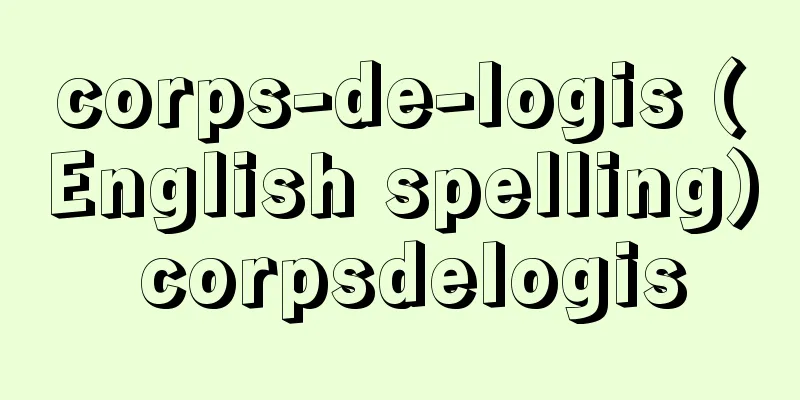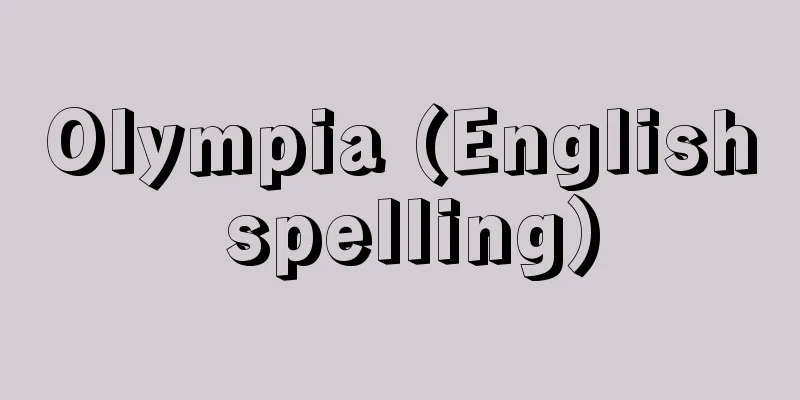Oda Makoto

|
Novelist. Born in Osaka. Graduated from the Department of Linguistics, Faculty of Letters, University of Tokyo. Oda Minoru grew up in wartime, when war was an everyday scene. His father and older brother went to war, and he was taught at school that killing the enemy was natural. However, the Great Osaka Air Raid, which began in the middle of the night on March 13, 1945 (Showa 20), reduced the city of Osaka to ruins overnight. Countless corpses were scattered here and there in the ruins. The 12-year-old boy knew that the corpses were the nameless old men and women next door, the guys and girls he had played with just the day before. They were killed so suddenly and ruthlessly, like insects. This is where Oda Minoru's "idea of difficult death" was born. It was an idea that clarified "don't kill" by taking a position that refused to make people die a completely meaningless "difficult death." Beheiren (Citizens' Alliance for Peace in Vietnam) was an organization that put this idea into practice. Oda Minoru wrote "Notes of the Day After Tomorrow" (1951) at the age of 17 and "Time of My Life" (1956) during his university years, simultaneously depicting the youth after the Second World War. It was a youthful and conceptual work. In 1958, he studied in the United States, and returned to Japan after visiting North America, Europe, the Middle East, and India. His record of that journey, "I'll See Everything" (1961), became a bible for young people wandering the world. He interacted with ordinary people on the streets all over the world, using gestures and movements. In this way, he discovered the words that suited him. After this, Oda Minoru began to write novels in the words of ordinary "people." In America (1962), he shattered the idealized image of America and created a chaotic image of America plagued by racial discrimination. In Modern History (1968), he painted a holistic picture of modern Japan, including its customs and sexuality. In Guadalcanal (1973) and Under the Sea (1981), he revealed what the Pacific War meant to its citizens. Far from Vietnam (1991), which he worked on over a decade, is an attempt to reconstruct a holistic view of the world, starting from a place where all ideals had collapsed. The setting is Kobe. Three generations appear in the film. The first is a Japanese who survived by eating human flesh in New Guinea, and a Jew who survived the gas chambers at Auschwitz. The second is a Vietnamese who fought against American soldiers, an American soldier who killed Vietnamese by spraying Agent Orange, and a Japanese who participated in the anti-Vietnam War movement. The third is a high school student called a "gay", a Vietnamese refugee who becomes a real "gay" and makes money in Japan, and a woman who decides to give birth to a child with a man who is affected by the aftereffects of Agent Orange. These three generations mix together and are blinded by sex, greed, and money, breaking through the boundaries between men and women, justice and justice, and evil and evil. A world is established in which normality is abnormal and abnormality is normal. With this work, Oda Minoru has completed a magnificent comedy that encapsulates the tragedy of humanity. In his old age, Oda Minoru wrote great short stories using material from his own surroundings, such as "Fuming on 'Aboji'" (1998, winner of the Kawabata Yasunari Literature Prize), and broke new ground with the publication of the series "Kudaku Umeku Laugh" (2001), which was themed on lonely deaths in the Great Hanshin-Awaji Earthquake and the death of his father and mother. In 2004, he became one of the initiators of the "Article 9 Association" that opposes constitutional revision along with Inoue Hisashi, Oe Kenzaburo, Tsurumi Shunsuke and others, and continued his constitutional protection movement. [Masaaki Kawanishi] The Complete Works of Oda Makoto, 10 volumes (1970-71, Kawade Shobo Shinsha) ▽ Far Away from Vietnam, Vol. 1-3 (1991, Kodansha) ▽ The Complete Novels of Oda Makoto, 13 volumes, plus supplementary volume 1 (1992-, Daisan Shokan) ▽ Thoughts on Disaster, Thoughts on Difficulty in Death (1996, Asahi Shimbun) ▽ Stepping on "Father" -- A Collection of Oda Makoto Short Stories (1998, Kodansha) ▽ Selected Criticisms of Oda Makoto, Vol. 1-3 (2000-01, Chikumashobo) ▽ Crunch, Moan, Laugh (2001, Shinchosha ) ▽ I'll See Anything (Kodansha Bunko) ▽ Notes on the Day After Tomorrow (Kadokawa Bunko) ▽ Guadalcanal (Kodansha Bunko) ▽ "Modern History, Volumes 1, 2 and 3 (Kadokawa Bunko)" ▽ "Hiroshima" (Kodansha Bunko) ▽ "The Sea - Sixteen Short Stories Related to the Pacific War (Kodansha Bunko)" ▽ "Oda Makoto - The Thoughts and Literature of an 'Ordinary Person' by Kuroko Kazuo (2002, Bensei Publishing)" [Reference item] |Source: Shogakukan Encyclopedia Nipponica About Encyclopedia Nipponica Information | Legend |
|
小説家。大阪生まれ。東京大学文学部言語学科卒業。小田実は戦争が日常的な光景だった戦時下に育った。父や兄は戦争に行き、学校では敵を殺すのはあたりまえだと教えられた。ところが1945年(昭和20)3月13日深夜から始まった大阪大空襲は、一夜にして大阪の街を廃墟(はいきょ)にした。廃墟のあちらこちらには無数の死体が転がっていた。12歳の少年は、その死体が名もない隣のオッチャン、オバハンであり、昨日までいっしょに遊んでいたアイツやコイツであることを知っていた。そいつらはじつにアッケナク、ムゴタラシク、虫けらのように殺されていった。ここから小田実の基本である「難死の思想」が生まれる。それは人々がまったく無意味な「難死」を遂げさせられることを拒否する立場にたって「殺すな」を明確化する思想だった。この思想にたって実践されたのが、「べ平連」(「ベトナムに平和を!市民連合」)である。 小田実は、17歳で書いた『明後日の手記』(1951)や大学時代に書いた『わが人生の時』(1956)で第二次世界大戦後の青春を同時進行的に描いた。それは若々しく観念的な作品だった。1958年にアメリカに留学し、北米、ヨーロッパ、中近東、インドをまわって帰国した。その旅の記録『何でも見てやろう』(1961)は、世界を放浪する若者のバイブルになった。世界各地の街頭にあふれる普通の人々と手ぶり身ぶりをまじえて交歓した。こうして彼は自分にあったことばを発見していった。これ以後、小田実は普通の「ヒト」の言葉で小説を書き始めた。 『アメリカ』(1962)では美化されたアメリカの幻像を破り、人種差別を抱える混沌(こんとん)としたアメリカ像を創造した。『現代史』(1968)では風俗や性をも含む現代日本の全体像を描いた。『ガ島』(1973)、『海冥(かいめい)』(1981)では太平洋戦争とは市民にとって何だったのかを明らかにした。10年の歳月をかけて取り組んだ『ベトナムから遠く離れて』(1991)は、すべての理想が崩壊した場所から出発して、世界の全体像を再構築しようとしたものである。舞台は神戸である。そこには三つの世代が登場する。第一はニューギニアで人肉を食べて生き残った日本人、アウシュウィッツのガス室から生還したユダヤ人、第二はアメリカ兵と戦ったベトナム人、枯葉剤をまいてベトナム人を殺したアメリカ兵、ベトナム反戦運動に参加した日本人、第三は「おかま」とよばれる高校生、本当の「おかま」になって日本で稼ぐベトナム難民、枯葉剤後遺症の影響がある男の子供を生む決心をした女性などである。これら3世代が入り混じり色と欲と金に目がくらみ、男は男、女は女、正義は正義、邪悪は邪悪の境界を突破してしまう。そこではあたかも正常が異常であり、異常が正常であるような世界が成立してしまう。この作品で小田実は人類の悲劇を包み込む壮大な喜劇を完成した。 老年を迎えた小田実は『「アボジ」を踏む』(1998。川端康成文学賞受賞)など身辺から素材を得た名短編を書き、阪神・淡路大震災における孤独死と、父と母の死をテーマにした連作『くだく うめく わらう』(2001)などを発表し新境地を開いた。また、2004年(平成16)井上ひさし、大江健三郎、鶴見俊輔らとともに憲法改正に反対する「九条の会」よびかけ人となり、護憲運動を続けた。 [川西政明] 『『小田実全仕事』全10巻(1970~71・河出書房新社)』▽『『ベトナムから遠く離れて』1~3(1991・講談社)』▽『『小田実全小説』全13巻・別巻1(1992~ ・第三書館)』▽『『被災の思想 難死の思想』(1996・朝日新聞社)』▽『『「アボジ」を踏む――小田実短篇集』(1998・講談社)』▽『『小田実評論撰』1~3(2000~01・筑摩書房)』▽『『くだく うめく わらう』(2001・新潮社)』▽『『何でも見てやろう』(講談社文庫)』▽『『明後日の手記』(角川文庫)』▽『『ガ島』(講談社文庫)』▽『『現代史』上中下(角川文庫)』▽『『Hiroshima』(講談社文芸文庫)』▽『『海冥――太平洋戦争にかかわる十六の短篇』(講談社文芸文庫)』▽『黒古一夫著『小田実――「タダの人」の思想と文学』(2002・勉誠出版)』 [参照項目] |出典 小学館 日本大百科全書(ニッポニカ)日本大百科全書(ニッポニカ)について 情報 | 凡例 |
>>: Steamed Odamaki - Odamakimushi
Recommend
Étienne Gilson
French philosopher and historian of medieval thou...
Alternate messenger - Koutaishi
〘Noun〙 Under the Ritsuryo system, when a local off...
Eclipse (English spelling)
Daily eclipse. Lunar eclipse. The dull plumage col...
glomerular filtration rate
...The former includes creatinine and inulin, whi...
dhow
...Their ships, which appear in Chinese historica...
Panorpa japonica (tail worm)
An insect of the Mecoptera order, Mecoptera family...
Anchor chain - Anka-chen
…Anchor is a tool used to anchor a ship in a plac...
Woman's House - Onnanoie
It is also called "Woman's Roof," &q...
Torihama Shell Mound
<br /> The shell mound is located in Toriham...
Maricourt, P.de (English spelling) MaricourtPde
…13th century French scholar. His real name was P...
Uku mine
…There are fishing ports at Nago, Kiyo, and Uda, ...
Difference principle
Also known as the discrimination principle. One of...
Xie Wen - CEO
A poet from the Southern Qi Dynasty in China. His...
Colleoni, Bartolomeo
[Born] 1400. Bergamo, Solza [Died] 1475. Malpaga A...
Lejre
…a legendary dynasty that is said to have been fo...









![Upolu [island] - Upolu](/upload/images/67cf8e30d2e21.webp)